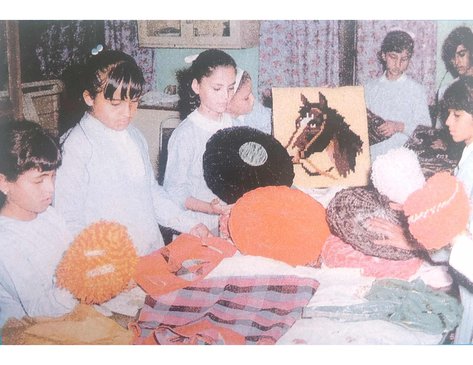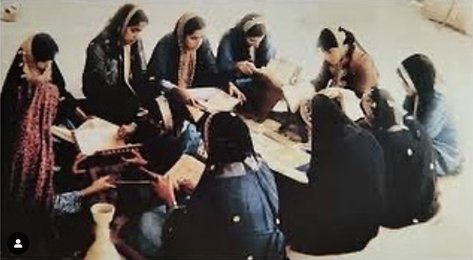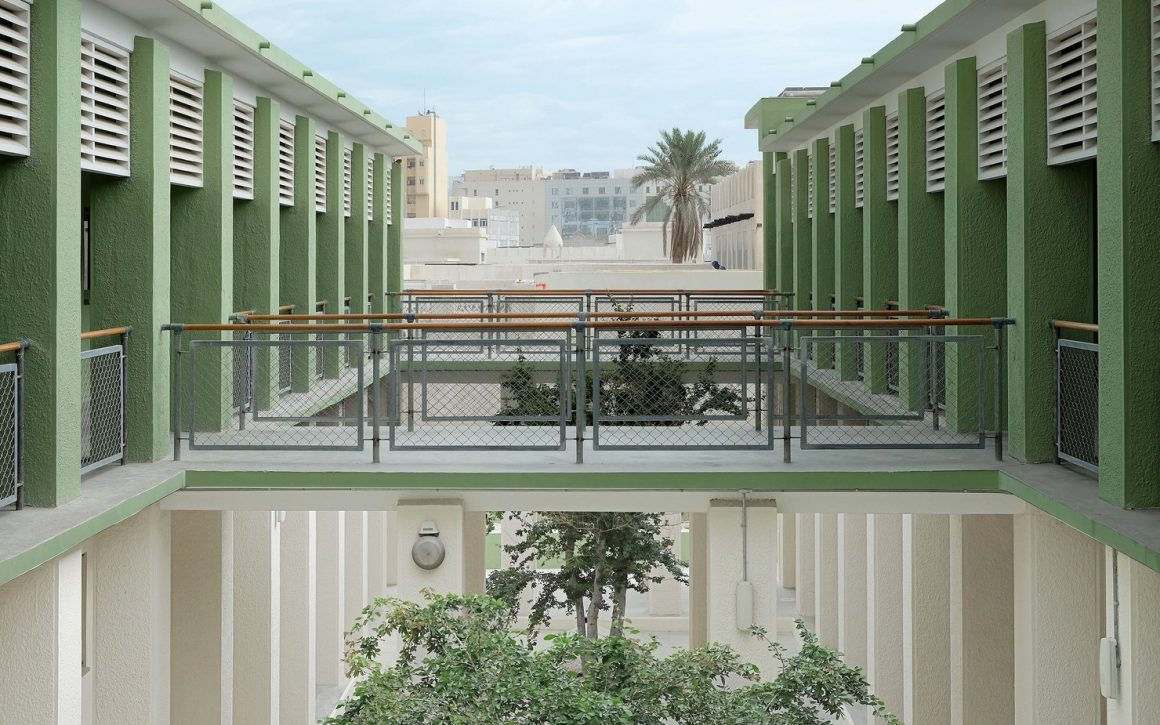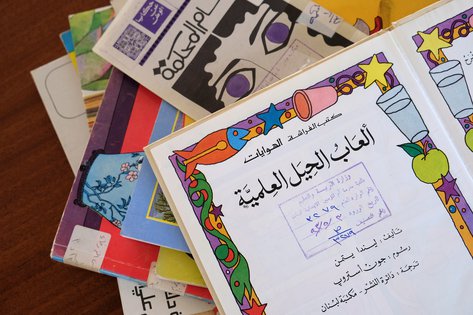Tours can be booked through Qatar Museums’ website.
Schools are known to be the birthplace of ambition and a source of inspiration for children. The subjects taught from a young age often lay the foundation of what many students choose to pursue in the future.
And art class can be the laboratory of future designers.
With the importance of school in mind, Liwan Design Studios and Labs was established this year at what used to be the Umm Almo’mneen Primary School for Girls, the first in the country.
Initially named Banat El Doha, the school was opened in the late 1950s by the pioneering educator Amna Mahmoud Al Jaida, who was also its first principal.
The design hub was created by Qatar Museums (QM) as part of its mission to promote Doha’s rich arts industry and inspire more local designers.
“The school looked the same as it does now, in its shape, and the building, its foundations..” recounted former student at the school Imaan Al Sa’ad, to QM.
In 2019, the design studios breathed life back into the school starting with a restoration project, after it had shut its doors in 2005.
The building stands out with its distinct designs that illustrate a path tracing back to Qatar’s modern history, which has been preserved by QM.
The path to education
“Liwan” translates to “courtyard” in Arabic; the studios’ name was inspired by the courtyard in the centre of the school, which was also build in the mid 20th century. Its steadfastness until the present time mirrors the founder’s journey.

Al Jaida was known as a campaigner for girls’ education and used to visit homes in Qatar to convince families to send their daughters to school.
Portraits have shown the prominent educator in her abaya and batoola (traditional golden face cover) passionately building an incubator for women leaders, hiring the country’s first generations of teachers and mentoring them.
Before establishing the girls’ school, she started offering elementary education, known as “kuttab”, in her home in 1938. Al Jadia was one of the only two women in Qatar to run such an institution.
By the early 1950’s, Al Jaida’s kuttab had become part of what was then-known as the Ministry of Knowledge, under the supervision of the Head of the Committee of Education, Abdel Badie Saqr.
Since Al Jadia’s house was small, the teaching was moved to a building rented from Mozah Darwish before eventually moving to the space currently hosting the design studios in Msheireb, the heart of Doha.
The reason behind the move was due to the growing admittance of girls to the school, inspiring the establishment of Umm Almo’mneen school in Al Bidda, between the late 1950s and early 1960s.

According to QM, the second school closed between the 1960s and 1970s, without mentioning the reasoning, and the students were transferred to the building in Msheireib. This was when Banat El Doha was renamed Umm Almo’mneen.
The school launched its permanent library during the same period.
The local ministry of education was established in Al Jaida’s era, where Sheikh Jassim Bin Hamad Al Thani was appointed as the first Minister of Education. This enabled the sector to develop various fields, which gave Sheikh Jassim the title of the “father of education and culture”.
Conversion to art studios
After it was shut down, the school began its transformation into the Mshereib Art Centre, housing studios and workshops for designers and artists. In 2019, the building was added to several conservation efforts until it became a creative hub.
A key element in the building is the courtyard, an open-air area where people gather and exchange their thoughts and expertise on a wide variety of topics.
Fast-forwarding to the present, the centre is now a place for designers to work together and explore the local arts scene.
The building has three studios, the TypeAraby, Qatar Preparatory School (QPS) and Al Mafyar.
The first is a laboratory dedicated to the preservation and cultivation of Arabic typography and type design. TypeAraby was founded by Basma Hamdy, a research-based designer, author, curator and associate professor of Graphic Design at Virginia Commonwealth University School of the Arts in Qatar (VCUarts).
Designers at the lab work together to promote the artistic ways Qatar’s native language is presented to the public and its deep-rooted cultural elements.
TypeAraby is a platform that hosts events, workshops, lectures, exhibitions and publications. It is also utilised by the local, regional and international creative communities to promote the distinctive usage of calligraphy.

On the other hand, QPS is a school for the creative industries that are undergoing development under the auspices of QM and Sheikha Al Mayassa bint Hamad bin Khalifa Al Thani.
The school will serve as a space to train and teach aspiring artists about cultural designs through advanced technologies, including large-scale 3D printers and virtual film production studios.
With Qatar’s history heavily interlinked with fishing, Al Mafyar resort lies on a prominent beach in the country that carries the memory of an ancient village from 1958. It aims to preserve the village to bring the gift of the past back to the present.
“The concept is based on a combination of protection and regeneration, renovating and staying true to the original structure while differentiating the added buildings in a subtle approach to blend into the overall context,” QM states on its website.

The design hub also features the Liwan library, a crucial element in the building displaying old children’s storybooks. The books illustrate Qatar’s artistic heritage from as late as the 20th-century.
It also features books that date back to 1956, from vintage cookbooks to animal stories.
The books come from other countries in the Arab world, including Palestine, Egypt, and Jordan—most of which were brought by teachers from the countries who travelled to Qatar amid a growing demand for educators.
Through the books, children and adults are afforded the opportunity to sit in Al Jaidah seat, travelling back in time to revisit Qatar’s past.







